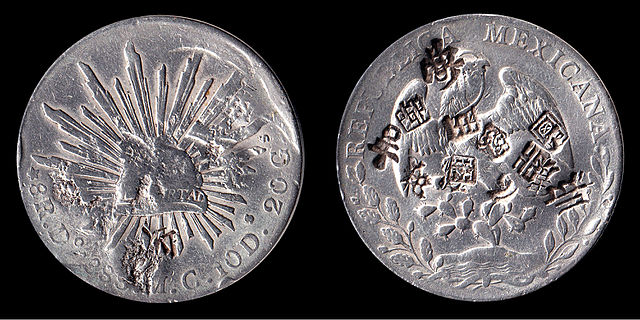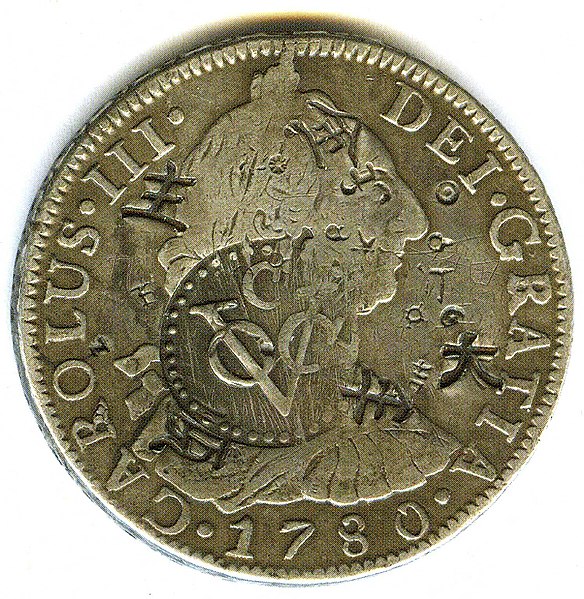The doubloon was a two-escudo gold coin worth approximately $4 or 32 reales,
and weighing 6.766 grams of 22-karat gold .
Doubloons were minted in Spain and the viceroyalties of New Spain, Peru, and New Granada. As the Spanish escudo succeeded the heavier gold excelente as the standard Spanish gold coin, the doubloon therefore succeeded the doble excelente or double-ducat denomination.
Spanish 4-doubloon, or doubloon of 8 escudos, stamped as minted in Mexico city mint in 1798. Obverse: Carol.IIII.D.G. Hisp.et Ind.R. Reverse:.in.utroq.felix. .auspice.deo.fm.
Italian States, Piacenza, 2 Doppie (1626), depicting Odoardo Farnese, Duke of Parma
The Spanish dollar, also known as the piece of eight, is a silver coin of approximately 38 mm (1.5 in) diameter worth eight Spanish reales. It was minted in the Spanish Empire following a monetary reform in 1497 with content 25.563 g (0.8219 ozt) fine silver. It was widely used as the first international currency because of its uniformity in standard and milling characteristics. Some countries countermarked the Spanish dollar so it could be used as their local currency.
A silver Spanish dollar minted in Mexico City c. 1650
Spanish Real de a Ocho coin (sometimes referred to as a "dollar") minted in Mexico City c. 1809
1888 Mexican dollar with Chinese "chop" marks
Sri Lanka






